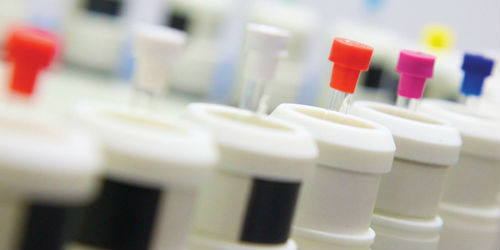Aerosol properties may hold clue to better lung disease drugs
Exploring improvements to inhaler technology could reduce overall drug dosages, leading to more cost-efficient treatment while limiting systematic exposure and side effects.
Lung disease is one of the most common causes of death in the Western world, claiming around 25,000 lives in the UK and over 13 million in the US. Bronchitis and emphysema are the most common forms of Chronic Obstructive Pulmonary Disease (COPD), a serious long-term condition where the flow of air into the lungs is gradually reduced by inflammation of the air passages and damage to the lung tissue.
The most effective treatments come in the form of inhalers but the nature of existing technology can mean higher doses of drugs have to be administered to compensate for the inevitable waste from whatever doesn’t reach the lung surface. Researchers at Bristol University are exploring how to improve the process at the scientific and technical level – their findings could eventually lead to better outcomes for patients as well as cost savings.
Inhalers (also known as nebulisers) provide one of the most direct means of delivering aerosol therapies into the airways. How effective the inhaled drug is depends on where and how the aerosol is deposited. During inhalation the high humidity in the lung causes the aerosol to increase in size, the degree of which is dependent on the aerosol composition.
Dr Allen Haddrell, from the Bristol Aerosol Research Centre, part of Bristol University, believes that a more rigorous understanding of the hygroscopic growth dynamics of the aerosol during, and prior to, inhalation could improve how inhalers work. It would essentially enable scientists, and ultimately clinicians and those designing inhalers, to predict and potentially target the site of aerosol deposition and so determine the biological response.
“When you breathe in aerosols they are going to grow, and how much they grow will dictate where they deposit in your lungs,” says Dr Haddrell. “If you can control that growth you can potentially target different locations within the lungs.
“We’ve recently developed the technology that allows us to measure ultra-fast aerosol growth kinetics. It’s generally assumed that if you turn on a nebuliser it creates a cloud, which is a saturated condition. But in reality, the piping of the nebuliser results in a broad range of humidity in the air flow. That leads to potentially massive changes in aerosol size throughout its lifetime.
“Our argument is that if you can control that, you can change where it goes in the lungs, and ideally improve drug efficacy.”
Dr Haddrell’s lab is specifically measuring mass and heat during the evaporation or growth of a single aerosol droplet and applying these findings to whole-lung inhalation models which they have modified to include the detailed hygroscopic growth. Their aim is to show the ability to target specific locations within the lung model, allowing the overall dose of the drug to be reduced leading to a more cost-efficient treatment while limiting systematic exposure and side effects.
Dr Haddrell began working with aerosol while studying for his PhD: “I developed technology to levitate a population of droplets in air, then prompt a reaction in the gas phase, before depositing them onto a cell culture and measure the downstream biological response.
“The approach is unique in many ways because we’re depositing less than a couple hundred droplets onto the cell culture, and within that sample, we’re only dosing a small region and looking at the impact in the surrounding culture.
“Currently we’re looking at putting additives into nebuliser formulations to control where they go in the lungs, and the question is, will the additives we use cause an amplification of the response? Does the presence of these additives amplify the cellular response, or do they have no effect?”
The project, funded initially by a research fellowship from Bristol University’s Elizabeth Blackwell Institute for Health Research, is at least five years away from being extended along clinical lines and as such, the findings will be critical in determining implications for patient outcomes.
“With nebulisers, you have a huge amount of wasted product and individual treatments take a long time,” adds Dr Haddrell. “If it were possible to improve the drug delivery process and get a higher concentration of the drug to the target site as quickly as possible, one could lower the dose and reduce wastage. Hopefully – ideally – that could improve the life of the patient.”
